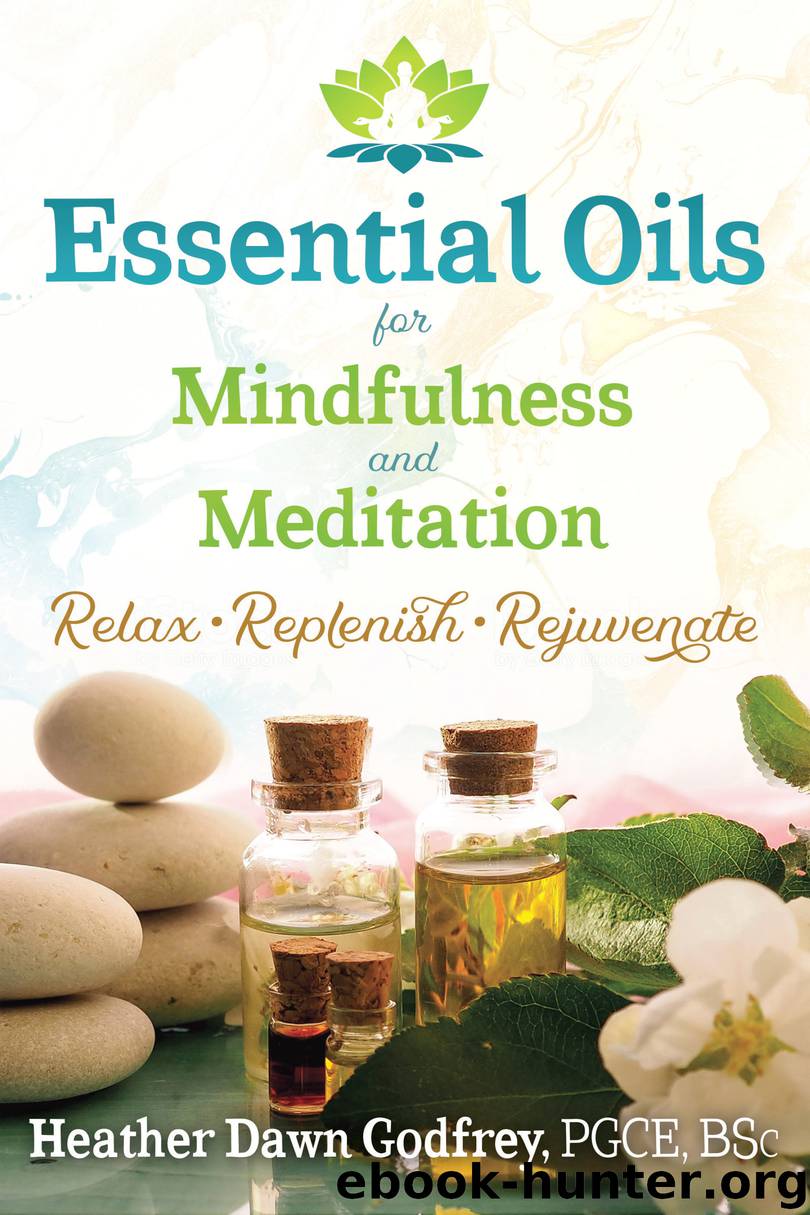Essential Oils for Mindfulness and Meditation by Heather Dawn Godfrey

Author:Heather Dawn Godfrey
Language: eng
Format: epub
Tags: Health/Mindfulness
Publisher: Inner Traditions/Bear & Company
Published: 2018-09-24T16:00:00+00:00
a) A quasi-pharmacological mechanism influencing the central nervous system or hormonal systems.
b) A semantic mechanism accounting for the influence of personal experiences with certain odors.
c) A hedonic valence mechanism providing the dimension for pleasantness for emotional states.
d) A placebo mechanism, which is based on subjective expectation.20
The following table, adapted from Jellinek, illustrates his findings.
In a more recent (2013) double-blind, placebo-controlled clinical study evaluating the effect of aromatherapy with Rosa damascena on the perception of post-surgery pain in children aged three to six years, Maryam Marofi et al. observed significant reduction in pain after diffusion of the rose. Sixty-four children (with the consent of their parent or guardian, and ethical clearance from the hospital's clinical research department) were randomly divided into two groups (A and B). The children in group A were given the essential oil (rose) and the children in group B were given only a carrier oil, sweet almond. Both groups otherwise received exactly the same prescribed post-surgical care. A postoperative pain assessment (TPPPS—Toddler Preschooler Postoperative Pain Scale) was carried out as soon as the children were submitted to their ward. Then an eye pad infused with one or two drops of either rose essential oil or sweet almond oil was placed 12 inches from the child's head. The pain assessment was repeated at 3, 6, 9, and 12 hours after surgery. Although there was initially little difference between both groups after the first assessment, and although there was some reduction of post-operative pain in both groups over the test period, the subsequent assessments did reveal significant decrease in the average score of pain intensity for the essential oil group. These children were probably too young to have formulated subjective or sematic expectation of the scent. The pleasant sweetness of the scent may have stimulated a hedonistic/ placebo response. However, the odor molecules may also have stimulated an independent biological/pharmacological reaction too.21
Download
This site does not store any files on its server. We only index and link to content provided by other sites. Please contact the content providers to delete copyright contents if any and email us, we'll remove relevant links or contents immediately.
The Power of Now: A Guide to Spiritual Enlightenment by Eckhart Tolle(5523)
The Miracle Morning by Hal Elrod(4490)
Rising Strong by Brene Brown(4335)
Being Aware of Being Aware by Rupert Spira(3163)
The Secrets to Charisma and Personal Magnetism: Learn a hidden energy tradition to become magnetically attractive and vitally alive by Martins Bruno(2626)
The Lost Art of Good Conversation by Sakyong Mipham(2487)
The Songlines by Bruce Chatwin(2465)
The Gifts of Imperfection by Brene Brown(2462)
A New Earth: Awakening to Your Life's Purpose by Eckhart Tolle(2437)
The Power Of Now by Eckhart Tolle(2143)
All Things New by John Eldredge(2072)
The Nature of Consciousness by Rupert Spira(2005)
The Untethered Soul: The Journey Beyond Yourself by Singer Michael A(1988)
The Empath's Survival Guide by Judith Orloff(1973)
Thoughts Without A Thinker: Psychotherapy from a Buddhist Perspective by Epstein Mark(1935)
The Seat of the Soul by Gary Zukav(1900)
Practicing the Power of Now by Tolle Eckhart(1823)
The Yoga of Jesus: Understanding the Hidden Teachings of the Gospels by Paramahansa Yogananda(1772)
Be Feel Think Do by Anne Berube(1747)
